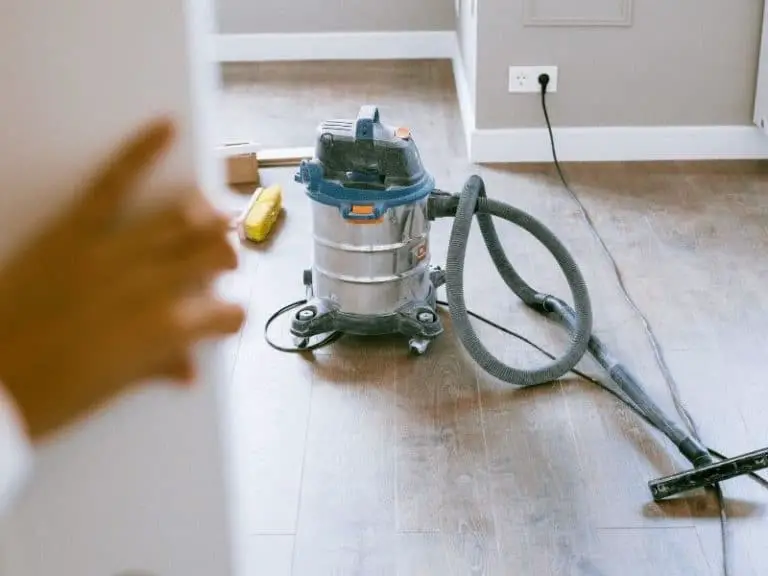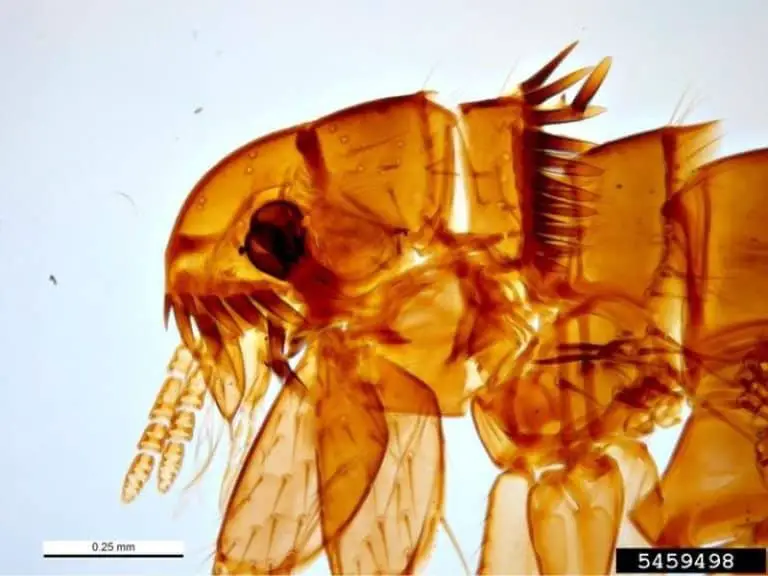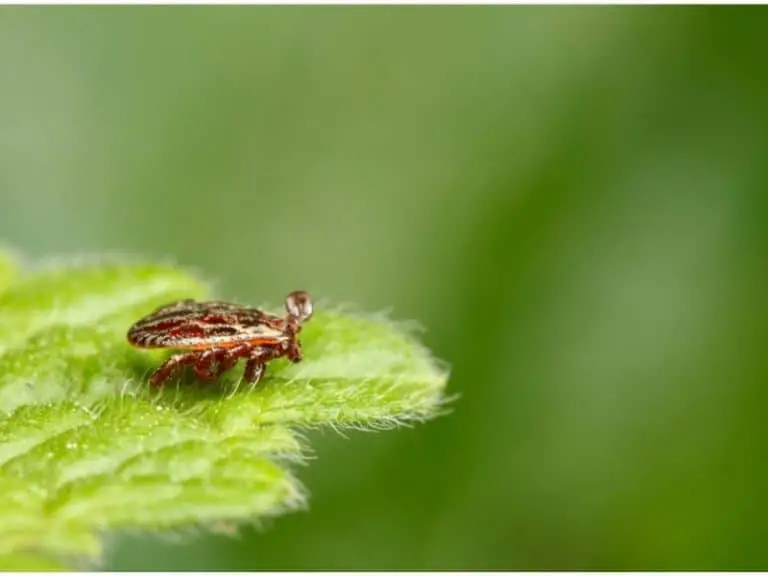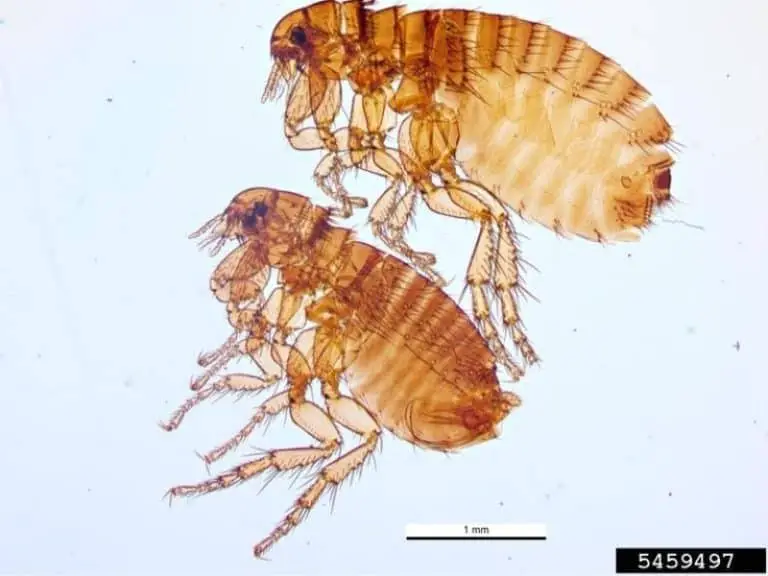What to Do If You Still Have Fleas After Bombing
Flea bombing is one of the most commonly advertised remedies for a flea infestation. It also tends to grab lots of attention since it seems capable of killing fleas all at once. Unfortunately, the use of a flea bomb does not guarantee that the infestation will come to an end.
If the flea infestation persists after bombing, one should use a pet-safe flea product. The home should be vacuumed, preferably paired with baking soda or diatomaceous earth. Infested items should be washed in hot water or sprayed with essential oils. Flea-repelling plants may be placed indoors.
When it comes to putting a flea infestation under control, you should focus on two things.
First, you should rid your pet of fleas with the help of an oral or a spot-on flea product. An anti-flea collar may be used, too.
Second, you should exterminate fleas hiding in furniture pieces, carpets, cracks, crevices, nooks, and crannies.
One of the nicest things about a flea bomb (also called “flea fogger”) is that it can kill other common household pests, too. Some of them include bed bugs, ants, spiders, ticks and lice. So, in other words, it’s a versatile solution.
Unfortunately, flea bombing alone may not get rid of a flea infestation completely.
As a matter of fact, the United States Environmental Protection Agency (EPA) says that bombing should not be used as the sole source of pest control.
Below, you will come across some of the steps you may do in case flea bombing fails to meet your expectations.
Pros and Cons of Flea Bombing
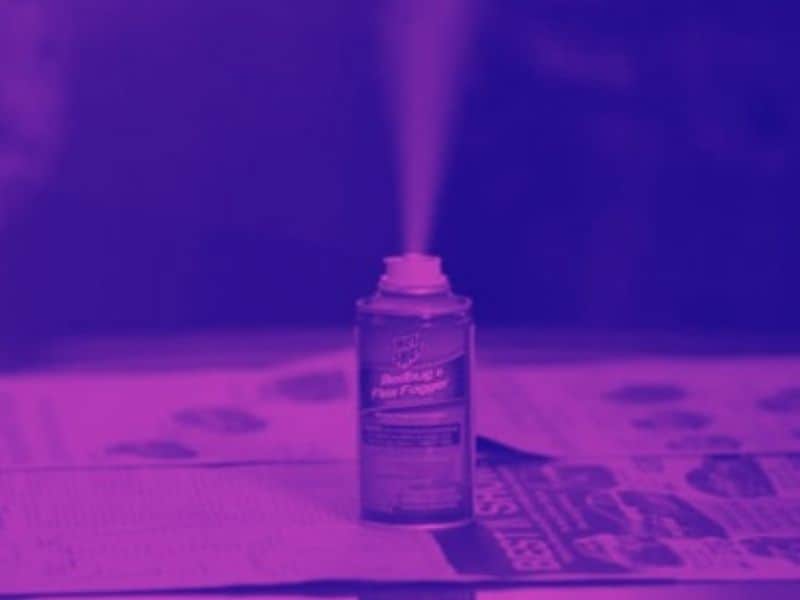
Before we talk about the DIY solutions that you may give a try should a flea bomb disappoint, let us first discuss some of the advantages and disadvantages of flea bombing.
Just because a flea bomb may not be able to get rid of every single flea hiding in your home doesn’t mean that the product is useless. It does work, but to a certain degree only.
Here are the pros of flea bombing that you should get acquainted with:
Easy on the Pocket
Flea bombs these days only cost anywhere from $10 to $15 a canister. The price tag depends on various factors. Some of them include the brand name, formulation, and the size of the room it can treat.
On the other hand, taking an infested pet to the veterinary clinic can cost anywhere from $100 to $200.
It’s important to note that a trip to the vet will only get rid of fleas on a cat or dog and not fleas in the home.
A single treatment carried out by a professional pest control company can cost a homeowner anywhere from $75 to $400.
Immediate Effect
What makes a lot of homeowners consider flea bombing is that a single treatment allows them to get rid of fleas in an entire room or even the entire home.
The product eliminates the need to get rid of fleas in different hiding places one after the other. So, in other words, flea bombing helps save a great deal of time and energy.
However, the entire family should evacuate the home while a flea bomb is springing into action.
Similarly, pets and plants should be removed, and food products and food-handling items should be protected from the mist.
Long-Lasting
Many flea bomb makers say that their products can provide long-lasting flea control. In some instances, it’s because the chemicals they count on can kill fleas in all life stages — eggs, larvae, pupae and adults.
However, it’s the fact that flea bombs leave behind a residue on surfaces why flea bombing exhibits a long-lasting effect.
When fleas that survived the bombing crawl on the residue, which is toxic, they die. Unfortunately, the residue is toxic not only to stubborn fleas but also to humans and animals.
Let’s now check out the cons of flea bombing that you should know:
Limited Reach
Flea bombs work through indirect application of chemicals toxic to fleas. They are designed to be left alone, usually in a span of two to four hours, to release pesticides in the form of a mist.
Alas, the pesticides coming from flea bombs cannot reach certain areas, including those that could be nesting places for fleas.
Some examples include the spaces underneath pieces of furniture and the interiors of cupboards, cabinets, and closets. This is one of the reasons why flea bombing isn’t 100% effective.
Evacuation
Before using a flea bomb, it’s of utmost importance for the room or home to be free of any living thing. This means that you, your family members and pets should evacuate it. Plants should be removed, too.
It’s not a good idea to enter the room or home for two to four hours. Otherwise, you will get exposed to pesticides in the form of a mist, which can wreak havoc on your health.
Carefully read the label of the flea bomb you are about to use to know how long you should refrain from entering your home.
Residual Chemical
Just because you didn’t enter your home for several hours doesn’t mean that you are off the hook. Even though there is no more mist in sight, it’s still possible for you to come into contact with pesticides.
That’s because flea bombing leaves a thin film of pesticides on surfaces exposed to the mist. Some of them are your dining table and kitchen countertop.
Due to this, it’s a must that you wipe down surfaces exposed to the chemicals released by a flea bomb. Residual chemicals left behind by bombing are especially hazardous to kids and pets.
Unable to Kill All Fleas
Earlier, it was mentioned that flea bombing might fail to get rid of fleas in hard-to-reach places. Sadly, that’s not the only reason why a flea bomb may not be able to put an end to a flea infestation once and for all.
Some flea bombs use pesticides effective for killing flea eggs, larvae and pupae only. Some flea bombs rely on pesticides capable of killing adult fleas only.
Even if a flea bomb contains pesticides that can exterminate fleas in all life stages, the fact remains that its efficacy is limited by its inability to reach certain areas.
Flea Bombing Didn’t Work — What Now?
If you are unhappy with the use of a flea bomb, fret not.
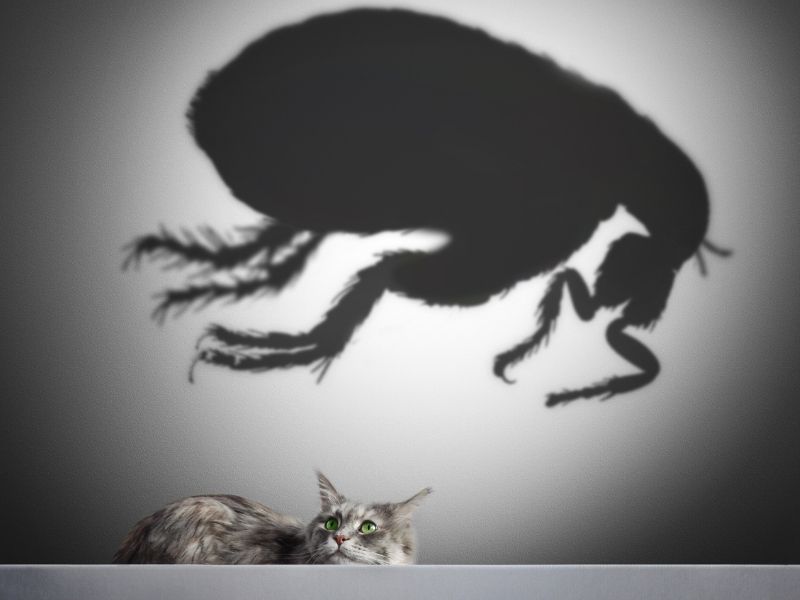
That’s because there are many other steps that you may take to put a flea infestation under control.
In fact, it is a good idea to carry them out together with flea bombing. As mentioned earlier, the use of a flea bomb should not be the sole DIY pest control method that you opt for.
Whether or not you have used a flea bomb, give the following solutions a try:
Pet Flea Product
The majority of a flea infestation stems from having a pet that’s infested with fleas. In the US, the most common flea type is called “cat flea”.
Despite the name, a cat flea can infest both cats and dogs.
Especially if you have a pet that seems to be scratching all the time, chances are that it is infested with fleas.
This is why you should begin your quest to have a flea-free home by eliminating fleas hiding in the fur of your four-legged friend.
A quick trip to the veterinary clinic will give you an idea of which flea product is suited for your pet.
Some flea products for pets are administered by mouth. Others come in liquid form that need to be applied onto the back of pets, between the shoulders.
Then there are also anti-flea collars.
No matter which option you prefer, make sure that it is approved by your trusted vet to keep your meowing or barking buddy out of harm’s way.
Dish Soap
Online, you can easily get your hands on glue traps designed to catch all sorts of flying and crawling pests.
You can come up with a similar trap effective for fleas. It only requires a couple of ingredients: dish soap and water.
All you have to do is combine dish soap with a little water in a small bowl. Place it in a room or area that seems to be a flea hotspot.
When fleas jump around to look for blood, they may get trapped in the DIY flea trap — the stickiness of the mixture will keep them from escaping. It won’t take long before trapped fleas drown and die.
It is a good idea to install this trap where there’s a lot of flea activity at night. That’s because fleas are nocturnal critters, just like many common household pests.
Some people who swear by this homemade trap say that more fleas can be captured by placing a candle next to it. However, this should be avoided as it’s a fire hazard.
Baking Soda and Salt
Do you use baking soda for cleaning surfaces and deodorizing enclosed spaces?
Then you will be more than happy to know that this versatile product can also help you deal with a flea infestation in case flea bombing fails to do the job.
What makes baking soda an effective solution for fleas is that it can kill fleas. No, baking soda can exterminate fleas not because it’s toxic to them but because it can dehydrate them.
When adult fleas crawl on baking soda, the fats and water in them will be absorbed by baking soda. Sprinkling baking soda on flea eggs will destroy them.
To increase the dehydrating properties of baking soda, mix it with equal amounts of salt. This results in a powdery mixture that’s more effective in killing fleas because the sharp edges of salt grains can cut open those blood-sucking pests.
The combination of baking soda and salt is very good at killing fleas hiding in carpets and rugs.
Diatomaceous Earth
Besides baking soda and salt, you may also count on diatomaceous earth if you want your home to be free of fleas. It may sound like it’s a toxic man-made chemical, but diatomaceous earth is 100% natural.
Like baking soda and salt, diatomaceous earth kills fleas by dehydrating them. Because diatomaceous earth is the fossilized shells of single-celled aquatic creatures called “diatoms”, every grain of it is sharp.
It’s due to this why diatomaceous earth can impress. Other than fleas, it can also kill bed bugs, carpet beetles, dust mites, silverfish, and others.
Unfortunately, if you have a pet, it’s a good idea to avoid using diatomaceous earth as a solution for a flea infestation. It won’t poison your cat or dog because diatomaceous earth is non-toxic.
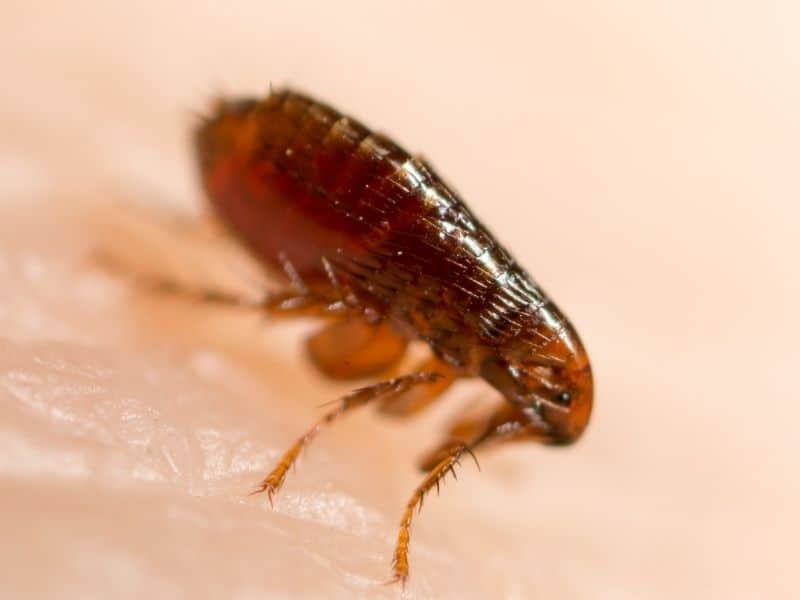
However, it may irritate the airways and lungs of your pet if it takes a whiff of it. This is true even if the packaging says that the product is pet-safe.
Vacuuming
One of the most effective home remedies for a flea infestation is reaching for your vacuum cleaner.
The household appliance that you use to keep your carpets, upholstered furnishings, surfaces, and corners dust-free can come in handy if you want to eliminate fleas without getting in touch with a local pest control company.
A vacuum can help deal with fleas in a couple of ways…
First, it sucks in flea eggs, larvae, pupae and adults.
This simplifies the task of removing them, especially in places that are hard to reach. Having a vacuum cleaner with a disposable dust bag is the right one for the job because it makes throwing away the dust bag filled with fleas in all life stages trouble-free.
Second, a vacuum creates vibrations.
Young fleas are encased in cocoons before a blood meal is available. The vibrations made by your vacuum can cause young fleas to emerge from their cocoons, thinking that an animal that can provide them with both blood and a viable environment is nearby.
Once the fleas are out of their cocoons and no blood is available for them to drink, they will die in a few days. It will also make them more vulnerable to treatments, including DIY ones that we have talked about thus far.
By the way, vacuuming is best paired with baking soda, salt or diatomaceous earth. What you need to do is apply generous amounts of your preferred home remedy to problem areas.
Leave it there for at least 12 hours to give it plenty of time to do its job. Vacuum to remove the baking soda, salt, or diatomaceous earth together with dead or weak fleas.
Hot-Water Washing
Not everything in your home that is infested with fleas can be vacuumed. The good news is that washable ones may be laundered in hot water. Fleas, like so many common household pets, cannot survive high temperatures.
When washing flea-infested items, make sure that the water is more than 95°F. Anything lower than this may fail to kill fleas on contact. For best results, add laundry detergent.
This will kill fleas faster by damaging their exoskeletons and drowning them. Clean items can be dried instead of washed — this is more than enough to get rid of fleas.
After washing or drying items, stash them in a plastic bag or plastic container with an airtight seal. The goal is to keep them from collecting fleas all over again.
The only time that you should remove them from a plastic bag or plastic container is when you are quite sure that the flea infestation is over.
Essential Oils
Many people, particularly those who are into aromatherapy and traditional healing, rely on essential oils to deal with anything from anxiety, headaches to joint pain.
On the other hand, many common household pests abhor essential oils, especially the ones whose chemical compositions can kill them or whose smells can repel them.
To get rid of fleas without using toxic chemicals, spray essential oils capable of killing those blood-sucking creatures. Three of the most impressive are cedar wood, clove and thyme essential oils.
Some essential oils cannot kill fleas. However, they can repel them, which makes them effective for keeping an infestation from happening all over again. Some of the best flea-repelling essential oils are…
- Lavender
- Rose
- Rosemary
- Peppermint
- Eucalyptus
- Basil
- Lemongrass
Many topical flea products for cats and dogs contain essential oils. Online, you may come across recipes for making anti-flea sprays for pets that contain essential oils.
Before you attempt to spray essential oils on your pawed pal, even if they are diluted very well, it’s a good idea to consult your trusted veterinarian first.
Flea-Repelling Plants
Believe it or not, something as simple as adorning your home’s exteriors and interiors with certain plants can help put an end to a flea infestation. Certain plants are scientifically proven to help keep fleas at bay.
Two of the most popular flea-repelling plants are chrysanthemum and pennyroyal. Both of them can keep your home free of fleas because fleas cannot stand the way they smell.
Besides making sure that your home stays flea-free, chrysanthemum and pennyroyal also help make it look attractive, thanks to their beautiful flowers.
Above, we mentioned some essential oils that can either kill or repel fleas. Needless to say, you can take advantage of them in plant form, which is easier on the pocket.
Especially if you have a green thumb, consider placing potted lavender, rosemary, peppermint, or eucalyptus in areas fleas tend to visit.
Just Before You Use a Flea Bomb
Bombing is one of the most popular remedies for a flea infestation. Besides being cheap, it kills fleas in various areas of the home at the same time. However, the use of a flea bomb is not the ultimate solution.
Although it has advantages, flea bombing has some disadvantages, too. One of those is that it may fail to eliminate all fleas in your home.
What’s more, the chemicals that it releases are toxic not only to fleas but also to humans and animals. It’s because of this why you and your pet may be placed in danger if you use a flea bomb incorrectly.
According to experts, using a flea bomb alone is not enough to bring a flea infestation to an end.
Whether you wish to avoid bombing altogether or are unhappy with the results, there are other steps that you may take to deal with fleas. The majority of them are safer and more effective than a flea bomb.
Photo credit: ©canva.com
Medical Disclaimer: TheHomePestControl is a digital publisher and does not offer personal health or medical advice. The contents of this website are not intended to substitute for professional medical advice, diagnosis, or treatment.
Affiliate Disclaimer: As an Amazon Associate, I earn from qualifying purchases made on our website. If you make a purchase through links from this website, I may earn a commission at no additional cost to you.


